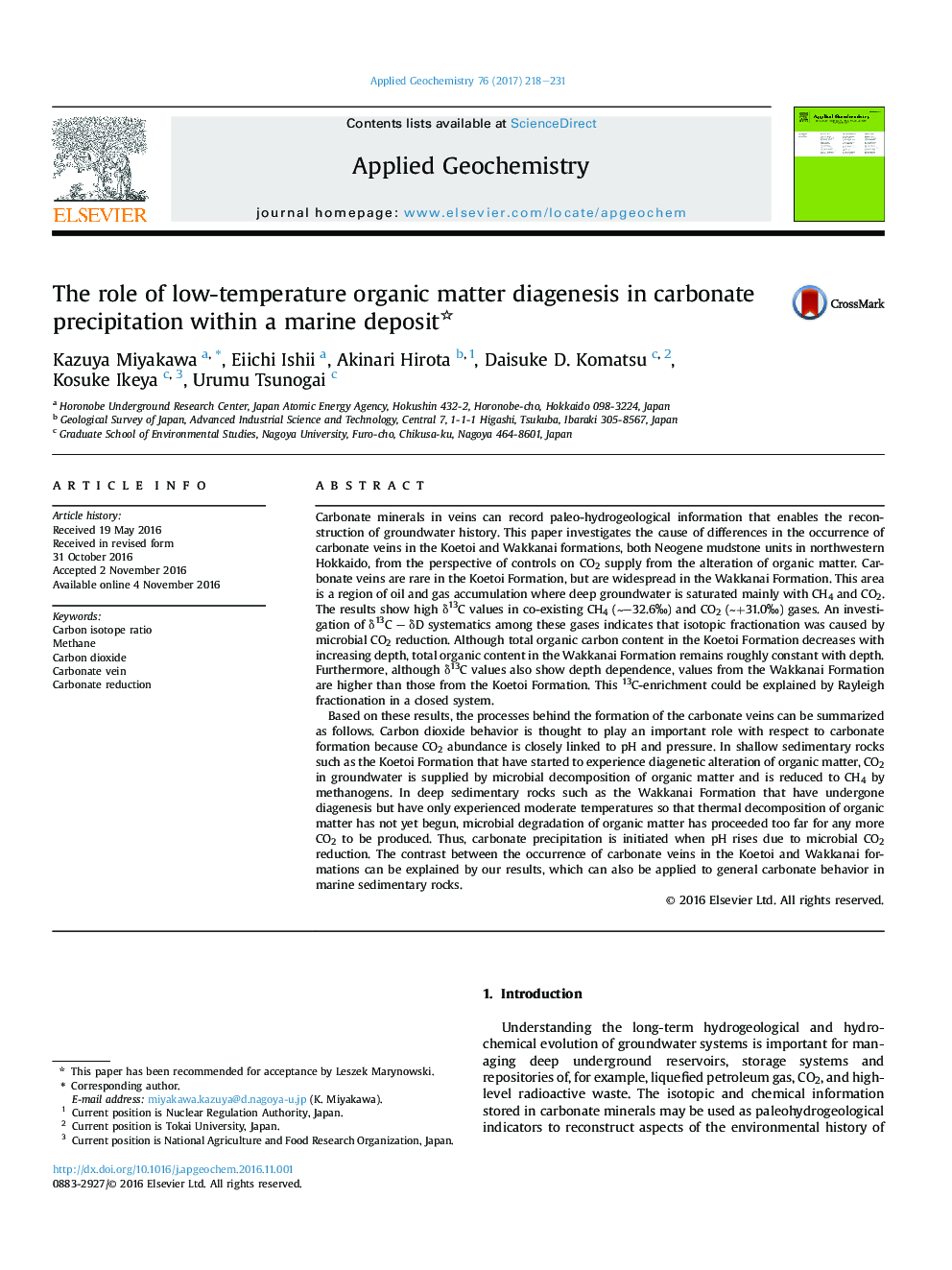| Article ID | Journal | Published Year | Pages | File Type |
|---|---|---|---|---|
| 5752631 | Applied Geochemistry | 2017 | 14 Pages |
Abstract
Based on these results, the processes behind the formation of the carbonate veins can be summarized as follows. Carbon dioxide behavior is thought to play an important role with respect to carbonate formation because CO2 abundance is closely linked to pH and pressure. In shallow sedimentary rocks such as the Koetoi Formation that have started to experience diagenetic alteration of organic matter, CO2 in groundwater is supplied by microbial decomposition of organic matter and is reduced to CH4 by methanogens. In deep sedimentary rocks such as the Wakkanai Formation that have undergone diagenesis but have only experienced moderate temperatures so that thermal decomposition of organic matter has not yet begun, microbial degradation of organic matter has proceeded too far for any more CO2 to be produced. Thus, carbonate precipitation is initiated when pH rises due to microbial CO2 reduction. The contrast between the occurrence of carbonate veins in the Koetoi and Wakkanai formations can be explained by our results, which can also be applied to general carbonate behavior in marine sedimentary rocks.
Related Topics
Physical Sciences and Engineering
Earth and Planetary Sciences
Geochemistry and Petrology
Authors
Kazuya Miyakawa, Eiichi Ishii, Akinari Hirota, Daisuke D. Komatsu, Kosuke Ikeya, Urumu Tsunogai,
